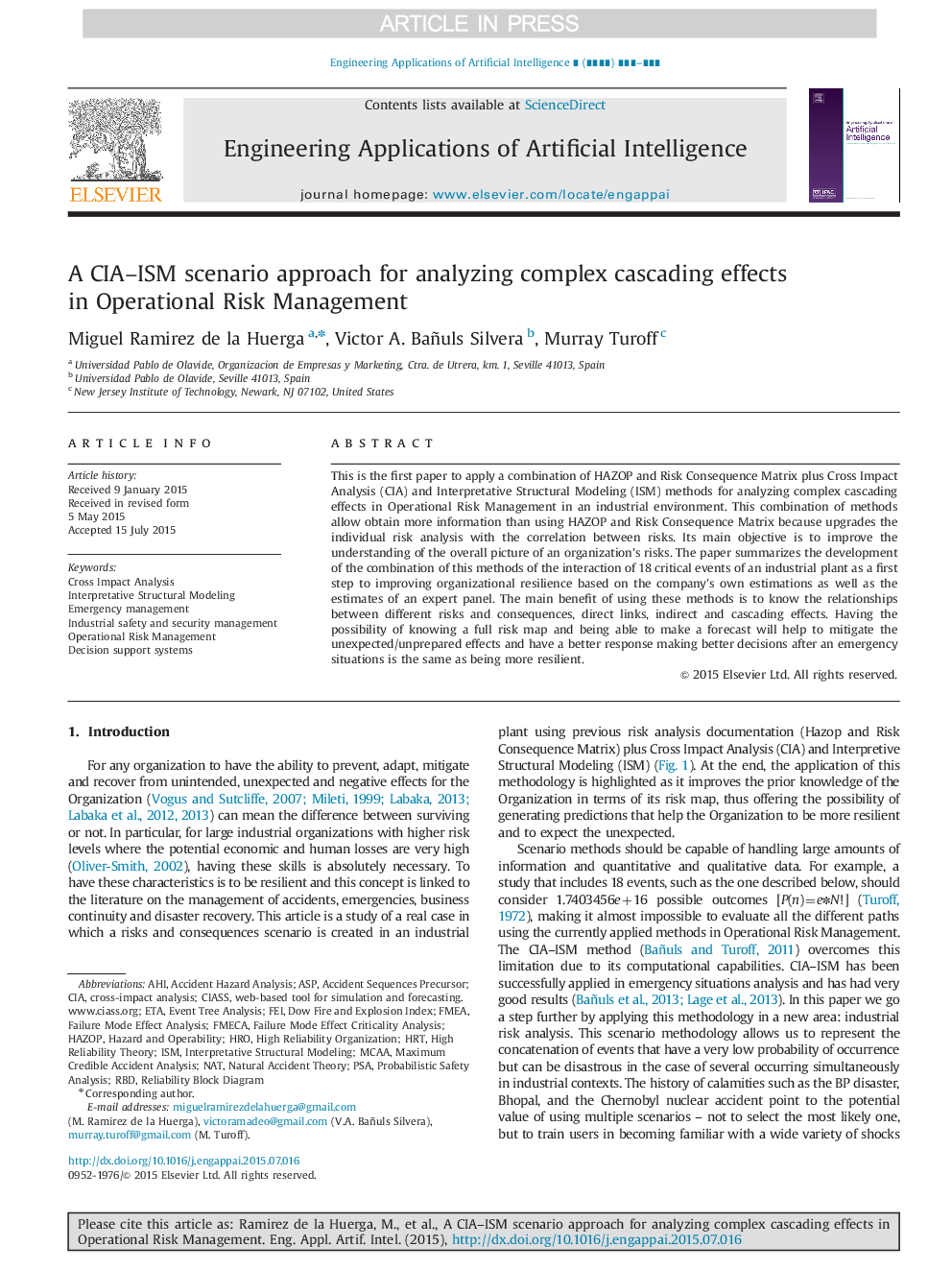| Article ID | Journal | Published Year | Pages | File Type |
|---|---|---|---|---|
| 6854412 | Engineering Applications of Artificial Intelligence | 2015 | 14 Pages |
Abstract
This is the first paper to apply a combination of HAZOP and Risk Consequence Matrix plus Cross Impact Analysis (CIA) and Interpretative Structural Modeling (ISM) methods for analyzing complex cascading effects in Operational Risk Management in an industrial environment. This combination of methods allow obtain more information than using HAZOP and Risk Consequence Matrix because upgrades the individual risk analysis with the correlation between risks. Its main objective is to improve the understanding of the overall picture of an organization׳s risks. The paper summarizes the development of the combination of this methods of the interaction of 18 critical events of an industrial plant as a first step to improving organizational resilience based on the company׳s own estimations as well as the estimates of an expert panel. The main benefit of using these methods is to know the relationships between different risks and consequences, direct links, indirect and cascading effects. Having the possibility of knowing a full risk map and being able to make a forecast will help to mitigate the unexpected/unprepared effects and have a better response making better decisions after an emergency situations is the same as being more resilient.
Keywords
RBDInterpretative structural modelingFMECAMCAAETAhigh reliability organizationFMEAHROaHIISMNATASPOperational risk managementPSAHRTHAZOPReliability block diagramFailure mode effect analysisCross-impact analysisProbabilistic Safety AnalysisCross impact analysisevent tree analysisCIADecision support systemsEmergency management
Related Topics
Physical Sciences and Engineering
Computer Science
Artificial Intelligence
Authors
Miguel Ramirez de la Huerga, Victor A. Bañuls Silvera, Murray Turoff,
